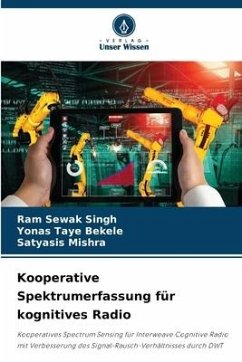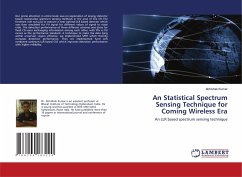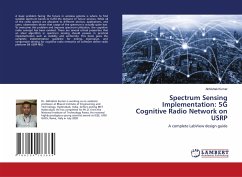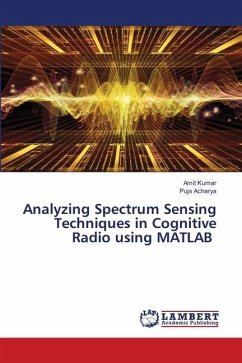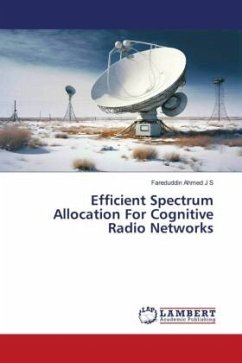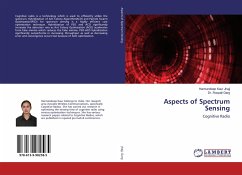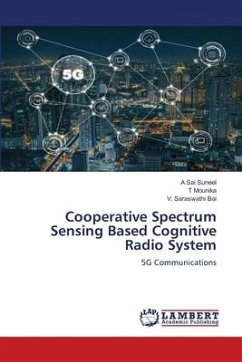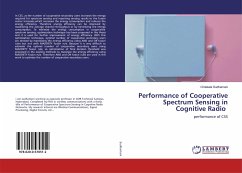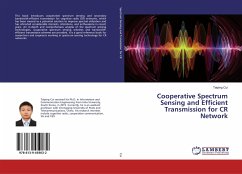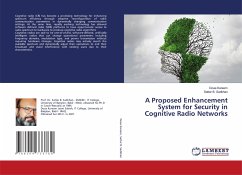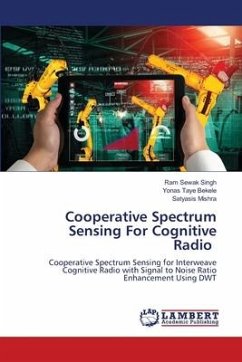
Cooperative Spectrum Sensing For Cognitive Radio
Cooperative Spectrum Sensing for Interweave Cognitive Radio with Signal to Noise Ratio Enhancement Using DWT
Versandkostenfrei!
Versandfertig in 6-10 Tagen
40,99 €
inkl. MwSt.

PAYBACK Punkte
20 °P sammeln!
Spectrum Underutilization, along with the growing issue of spectrum scarcity, has promoted a reassessment of how the radio frequency spectrum is used. Cognitive Radio technology comes as a solution which enhances the utilization of spectrum with systematic use of the scarce resource by opportunistic spectrum access. Among many spectrum sensing algorithms available, Energy Detector (ED) is preferred since it doesn't need the prior information about primary user's signals and are having low computational complexity. However, the performance of ED is directly proportional to signal to noise ratio...
Spectrum Underutilization, along with the growing issue of spectrum scarcity, has promoted a reassessment of how the radio frequency spectrum is used. Cognitive Radio technology comes as a solution which enhances the utilization of spectrum with systematic use of the scarce resource by opportunistic spectrum access. Among many spectrum sensing algorithms available, Energy Detector (ED) is preferred since it doesn't need the prior information about primary user's signals and are having low computational complexity. However, the performance of ED is directly proportional to signal to noise ratio (SNR) which leads to poor performance at the low SNR regime. In order to alleviate the detection problem at low SNR, Discrete Wavelet Transform (DWT) based denoising of the primary user signal is applied in the front end of ED. The effect of denoising prior to ED is analysed by employing six different mother wavelets as Haar, Daubechies, BiorSplines, ReverseBior, Coiflets and Fejer-Korovkinand, the performance metrics of ED is analysed using single stage wavelet based ED. Simulation results have shown that the Reverse Bior mother wavelet approach improves all the performance matrices.



